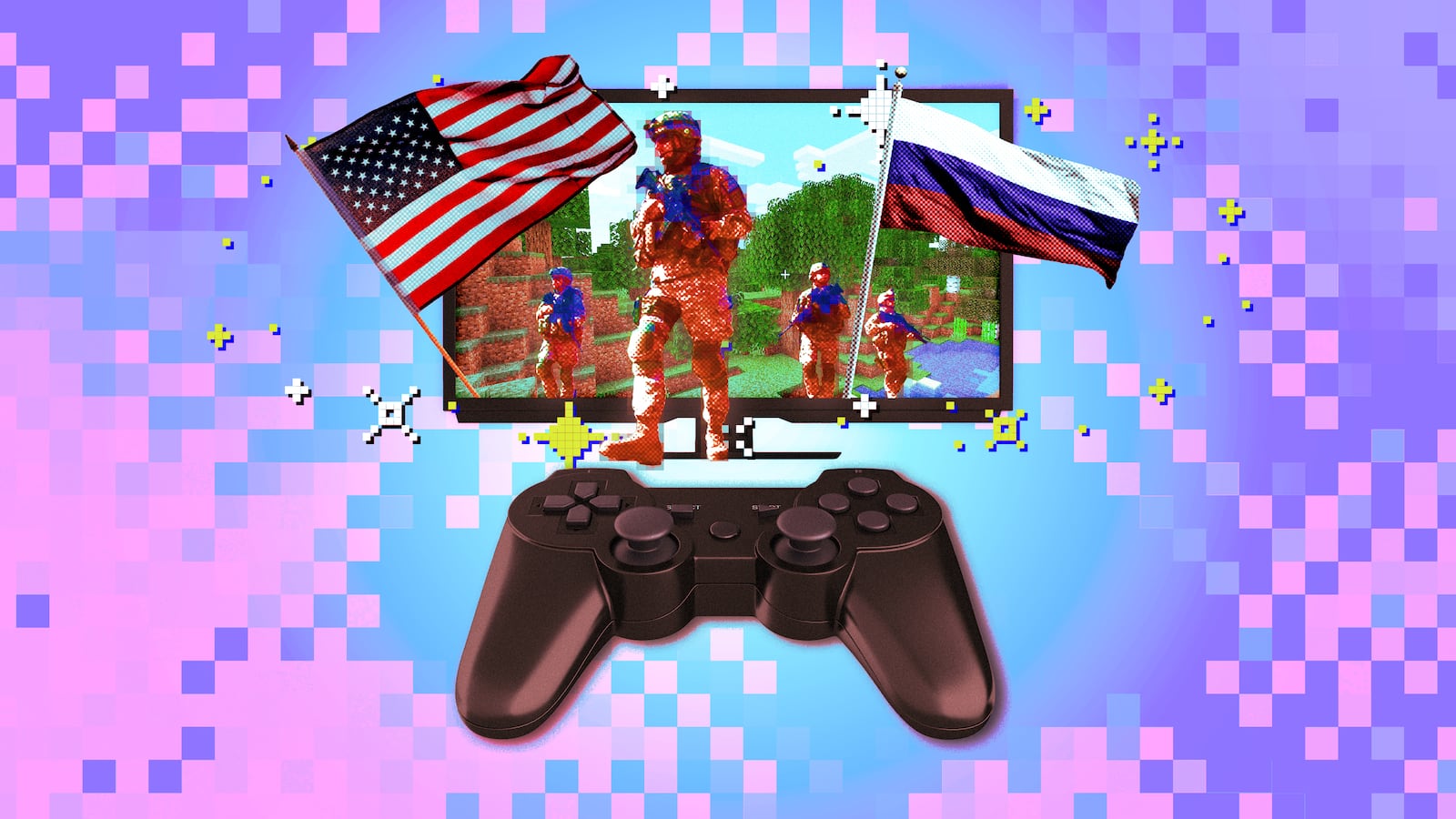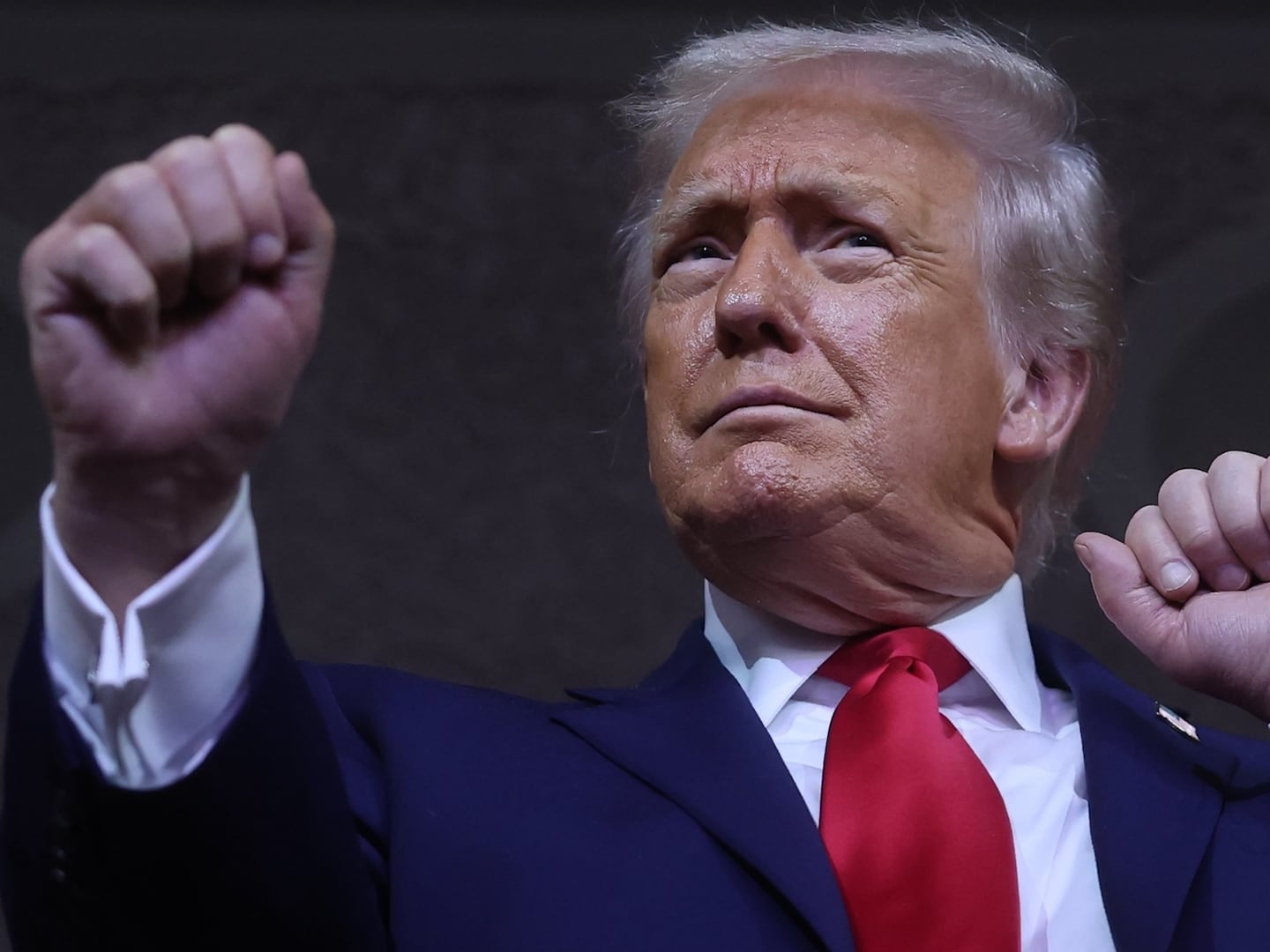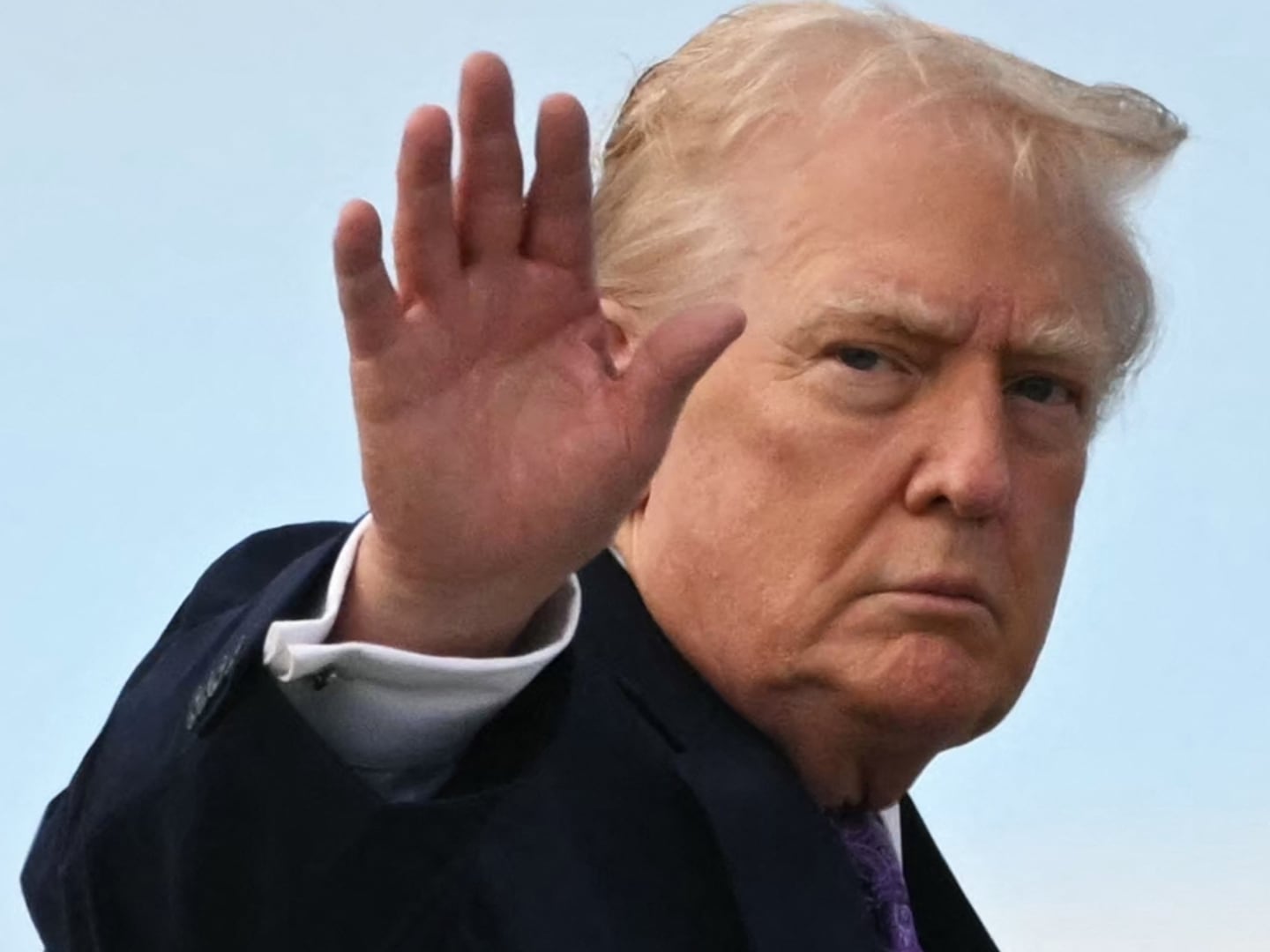Ever since its inception, the video game industry has been beset by controversy. There have been grave concerns about the perils of gaming addiction and moral panics regarding violence and sexualization in games.
Despite these controversies, video games have become a ubiquitous part of our culture and are played around the world. Digital tools for creating video games like Unity and Unreal Engine content have become widely available. Now, anyone with an internet connection and a laptop can create their own video game, which has led to a burgeoning indie gaming scene. However, it’s also caused a more surprising side effect: political influence, disinformation, and even radicalization.
“Popular culture is influencing the way we see the world,” Dominik Swiecicki, a counselor posted by the Psychological Defense Agency at the Embassy of Sweden in Tallin, told The Daily Beast. “We’re reading books or watching movies, where certain countries are non-existent, or certain ethnicities are portrayed as good or bad; we can assume that playing video games will also influence our view of the world.”
Just as films can be used to promote a particular ideology, so too can video games. For example, since 2002, the U.S. Army has developed and released more than thirty games in the America’s Army series. These games are notable for being the American government’s first significant use of video games as a platform to promote recruitment.
This tactic is also used by the U.S.’s adversaries. For example, the video games Special Force and Holy Defense were developed by the Hezbollah Central Internet Bureau. Mahmoud Rayya, an official for the bureau, said in a statement that it was designed to counter foreign video games that portrayed Arabs as enemies. However, in the training mode of Special Force, players also shoot posters of prominent Israeli figures, such as Shaul Mofaz.
The interactive and immersive qualities of video games means that players become personally engaged. It is these qualities that could enable games to influence players’ perceptions.
“The higher degree of immersion in video games lends itself to a higher degree of absorbing representations of the past; but people are not passive consumers of pop culture and they actively construct their own narratives within their life experiences,” David Waldron, a senior lecturer in history at Federation University, told The Daily Beast.
Propaganda Levels Up
Studies of radicalization tend to focus on social media. Linda Schlegel, an associate fellow at the Center for Applied Research on Deradicalization, noted in her research paper regarding radicalization in video games that we should at least assume games aid the process.
“Whether video games are a particularly potent tool for radicalization is currently an open question that is controversially debated among extremism researchers,” Schlegel told The Daily Beast. It is currently unknown what degree of influence video games have, as research is still ongoing
Disinformation within video games can be utilized for a variety of reasons; from recruitment or influencing elections, to war propaganda and inciting violence. Studies have shown that video games are an essential part of right-wing extremist culture. Video games have been incorporated into extremist propaganda, often as a source of memes.
In-game advertising is another tool utilized for propaganda and even political campaigns. In 2008, Barack Obama ran the first presidential campaign using political advertisements in online video games, like The Incredible Hulk and NASCAR 09. They appeared as banners or billboards, with an image of Obama and a link to his VoteForChange.com website. Then, ahead of the 2020 presidential campaign, players in GTA 5 could utilize a mod to display messages supporting Trump and Shapiro.
The possibilities for influence or disinformation are more prominent in open multiplayer games, such as Minecraft and Roblox, which encourage player engagement and player-generated content. These are virtual sandbox games, where the game is the platform from which players are able to create their own content. While the majority of this content is relatively benign, it’s also led to instances of Russian propaganda in these games. For example, a Minecraft concert celebrating Russia Day was streamed by a Russian official.
Governments are also enacting legislation to restrict certain content within their territories. This localized censorship is thereby forcing game developers to limit the content in their game to ensure that all markets are available to them.
For example, Oleksandr Bornyakov, the Ukrainian minister for digital transformation requested in Feb. 2023 that Sony, Microsoft and Valve ban the sale of the video game Atomic Heart in Ukraine. Bornyakov cited concerns relating to “toxicity, the potential collection of user data information and the possibility of their transfer to third parties in Russia, as well as the potential use of money raised from the purchase of the game to wage war against Ukraine.”
Power to the Players
However, there are also instances of video games being used to bypass state censorship. In Counter-Strike, a secret room was built into a map where players could learn news about the war in Ukraine, thereby allowing Russian gamers to access information contradicting the Kremlin’s narrative.
Of course, a user’s experiences within games do not necessarily mean that they’ll have any real-world impact. Players don’t just unquestioningly accept the narrative.
“The format of gaming can definitely have a major impact with disinformation but it’s complex and often subverted and reinterpreted depending on the experience, education, values and social and cultural context of the gamer,” Waldron explained.
What cannot be denied is that video games are another vector for sharing political viewpoints and disinformation, especially for particular population demographics that do not engage with traditional media. Video games have become another tool in the psychological warfare arsenal.
Ultimately, video games like most any other form of media can be used for good or evil; promoting peace and understanding or inciting hatred and distrust. It’s up to the individual gamers to exercise critical analysis when presented with information, to interrogate the facts, and verify using reputable sources—regardless of whether or not it’s unfolding via polygons on a screen.
“With social media we’re always told to be source-critical and watchful,” Swiecicki said. “We just see gaming as entertainment, as it should be, but we’re not as watchful.”







